Click on images to enlarge

infestation (Photo: Sheldon Navie)
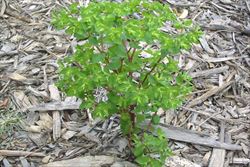
habit (Photo: Sheldon Navie)
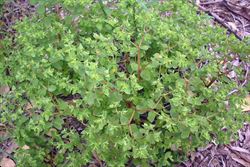
habit (Photo: Sheldon Navie)
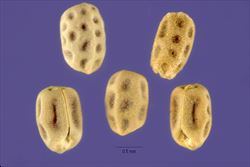
close-up of seeds (Photo: Carole Ritchie at USDA PLANTS Database)
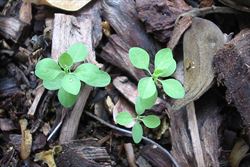
seedlings (Photo: Sheldon Navie)
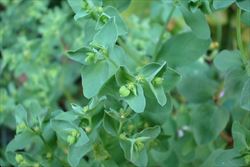
upper leaves and 'flowers' (Photo: Sheldon Navie)
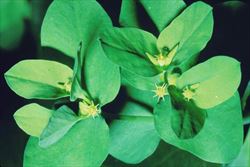
close-up of young 'flowers' (Photo: Greg Jordan)

close-up of 'flowers' and immature fruit (Photo: Sheldon Navie)
Scientific Name
Euphorbia peplus L.
Family
Euphorbiaceae
Common Names
cancer weed, milk weed, petty spurge, radium plant, radium weed, stinging milkweed
Origin
Native to northern Africa (i.e. Algeria, Egypt, Libya, Morocco and Tunisia), the Azores, the Madeira Islands, the Canary Islands, Europe (Denmark, Finland, UK, Ireland, Norway, Sweden, Austria, Belgium, Czechoslovakia, Germany, the Netherlands, Poland, Switzerland, Belarus, Estonia, Latvia, Lithuania, Ukraine, western Russia, Albania, Bulgaria, Greece, Italy, Romania, Yugoslavia, France, Portugal and Spain) and western Asia.
Naturalised Distribution
Widely naturalised in Australia and mostly found throughout the southern and eastern parts of the country. It is common in southern Queensland, throughout New South Wales and Victoria, in the ACT and Tasmania, in many parts of South Australia and in the south-western and southern parts of Western Australia. Also naturalised on Lord Howe Island and Norfolk Islands and occasionally naturalised in the southern parts of the Northern Territory.
Widely naturalised is other parts of the world including New Zealand, Fiji, French Polynesia, Hawaii, the USA and Canada.
Notes
Petty spurge (Euphorbia peplus) is a very widespread introduced species that has been present in Australia since shortly after settlement. It is a common weed of gardens, footpaths, disturbed sites, waste areas and crops that is occasionally cultivated for its medicinal properties. In many parts of the country it is not regarded as being invasive, however in certain regions and/or habitats it can be a problem. Petty spurge (Euphorbia peplus) is regarded as an environmental weed in parts of Western Australia, South Australia, Victoria and New South Wales.
In New South Wales it is a common weed of moist disturbed places and is listed as an environmental weed in the wider Sydney and Blue Mountains region. It is present in conservation areas in this region (e.g. McKay Reserve and Irrawong Reserve in Pittwater) and in other parts of the state (e.g. Kooraban National Park and Berkeley Nature Reserve on the south coast and Kinchega National Park in south-western New South Wales). In Victoria, petty spurge (Euphorbia peplus) is generally regarded as a low priority environmental weed. However, it has been recorded from natural plant communities, such as riparian shrublands, riverine escarpment bushland and remnant grasslands, and is also present in conservation areas (i.e. Phillip Island Nature Park and Central Creek Grassland, a remnant Western Basalt Plains grassland).
In Western Australia petty spurge (Euphorbia peplus) is mainly of concern in coastal habitats. For example, it is listed as one of the top ten coastal weeds of southern coast of Western Australia, between Albany and the South Australian border. It is a priority environmental weed in highly disturbed coastal foreshore areas at Joondalup and is listed as a weed of the North Coogee foreshore in Perth. It is also a weed of coastal heath vegetation on Rottnest Island, particularly in areas that have been naturally disturbed by nearby seabird nesting activity.
In South Australia petty spurge (Euphorbia peplus) is reported to grow on a wide range of soils, but is usually found in shaded and sheltered situations. It is on the list of invasive weeds that affect natural biodiversity in the City of Mitcham and is also present in several conservation areas in this state (e.g. Brownhill Creek Recreation Park, Cleland Conservation Park and Cudlee Creek Conservation Park). Petty spurge (Euphorbia peplus) has also been recorded from coastal conservation areas in Tasmania (e.g. Greens Beach/Kelso Coastal Reserve).
Note: This species is poisonous to humans and livestock and its milky sap can cause dermatitis and eye irritation.

